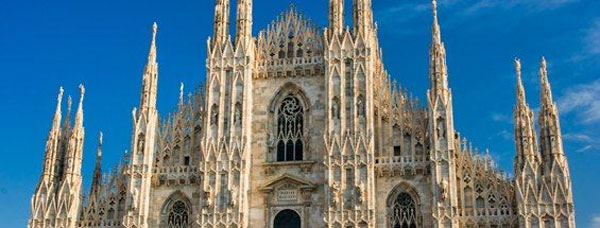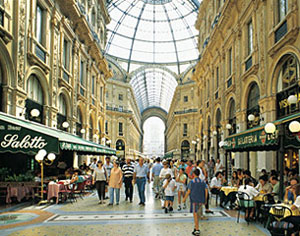Reply To:
Name - Reply Comment

Strategically placed at the gateway to the Italian peninsula, Milan and the surrounding region of Lombardy has been the subject of constant disputes over the centuries.
Established in 400BC by Celtic Insubres, Milan was subsequently conquered by Romans who eventually declared it the capital of the Western Roman Empire in 293AD. In 1492 the French King Louis XII laid claim to Milan, capturing it from the Swiss mercenaries who defended the city. Thirty years later it fell into the hands of the Austrian Habsburgs, and for the next three centuries pinged back and forth between French, Spanish and Austrian rule. In 1859, after a protracted period of political squabbling, Milan was incorporated into the Kingdom of Sardinia, which was renamed the Kingdom of Italy two years later.
Rapid industrialisation elevated Milan’s wealth and status and by the he 1950s and 1960s the city soon became the country’s leading financial centre. In the 1980s the world began to take notice of Milan’s textile export and clothing industry, and designers such as Armani, Versace and Dolce & Gabbana placed the city firmly on the fashion map. Today Milan is home to 1.3 million residents and is threatening Paris' century-long status as the world’s capital of haute couture or high-fashion.
Flights to Milan, Italy
 Attractions
Attractions
It is said that all roads lead to Rome, but in Milan all roads lead to the Duomo di Milano, the world’s fourth largest cathedral which took a staggering five centuries to complete. Milan’s streets either radiate from the Duomo or circle it, revealing that it occupies what was once the most central location during Roman times. The Gothic architecture of the Duomo comprises 135 spires and 3,500 marble statues complete with a golden Madonna or Madunina on top of the spire, a symbol of the city. Visitors can climb to the top of the roof for a commanding view of the area, and on a clear day, the Alps.
The Duomo is located on the central Piazza del Duomo which is surrounded by a number of Milan’s other iconic buildings. The Galleria Vittorio Emanuele II is an extremely upscale shopping mall which connects the Piazza del Duomo with the Piazza della Scala. The arcade blends an elegant combination of iron and glass and was officially opened in 1867 by Vittorio Emanuele II, king of a recently-unified Italy.
Adjacent to the Galleria is another Milanese landmark: the imposing Teatro alla Scala. This opera house opened in 1778, is one of the world’s leading opera and ballet theatres, and over the past two centuries has welcomed some of Italy’s greatest artists.
Other attractions include the 15th century church of Santa Maria delle Grazie. Whilst beautiful in its own right, it is the refectory’s fresco of Leonardo da Vinci’s Last Supper which is responsible for drawing the crowds and earning the church its UNESCO World Heritage status.
Dining and Nightlife
Food in Milan is generally excellent; however steer clear of the tourist areas as standards are noticeably lower and prices are considerably higher.
Typically Milanese dishes include Ossobuco - a stew of braised veal shanks, and Risotto alla Milanese - a rice dish prepared with saffron, onions and white wine. Lombardy – and therefore Milan – is well known for its dairy produce, so expect plenty of butter, cream and cheese. The city is also the birthplace of Panettone, a dry fruit cake traditionally given as a gift at Christmas.
Nightlife in Milan is vibrant. Most bars and restaurants serve aperitivo (a buffet of antipasti, free with drinks) between 6-9pm: a Milanese institution. These venues tend to close around midnight, at which time the energetic move on to the nightclubs (discoteca), which stay open till 4am. Milan’s fashionistas and beautiful people can usually be found hanging out in a number of fashion-label bars and clubs, with the Brera Gallery, Navigli and San Lorenzo areas being particularly popular.
Beyond Milan
Forty kms north of Milan is Lake Como, Italy’s third largest lake. A retreat for aristocrats since Roman times, the surrounding area is a popular tourist attraction with numerous villas and palaces lining the shore. A superb venue for sailing, windsurfing and celebrity-spotting, the Lake also features beautiful scenery and abundant wildlife.
Discover Emirates' comfortable inflight offerings, which include lie-flat beds in First Class, deeply reclining comfort in Business Class and room to relax in Economy Class. All classes feature ice, Emirates onboard information, communication and entertainment system offering up to 1,500 entertainment channels, making flights to Milan pass quickly.